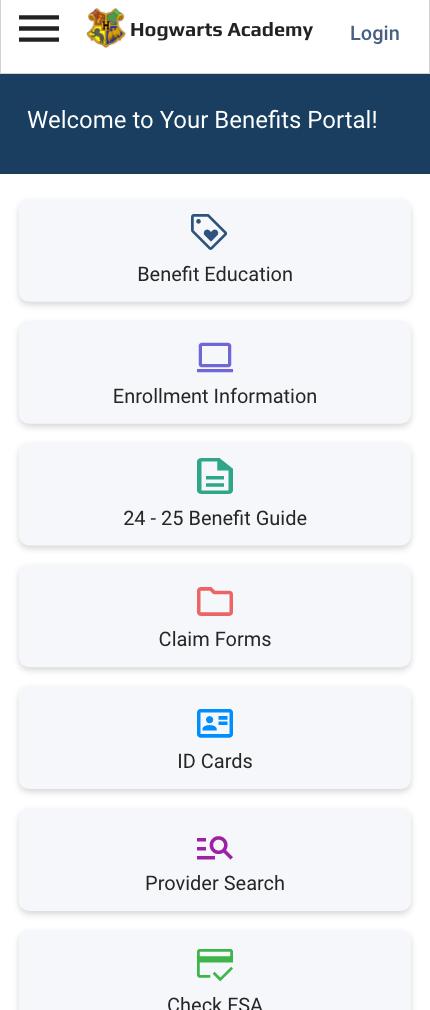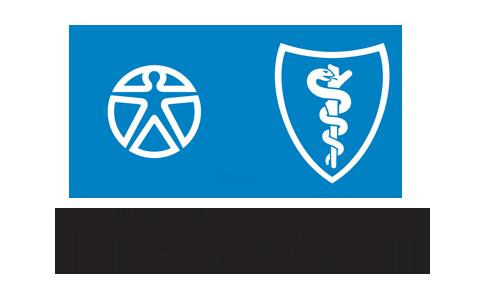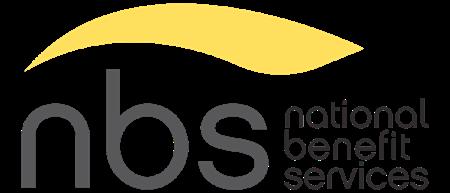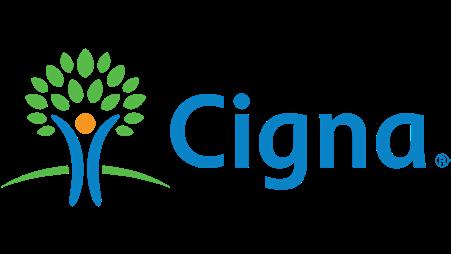




We are pleased to offer a full benefits package to you and your eligible dependents. Read this guide to know what benefits are available to you. You may only enroll for or make changes to your benefits during Open Enrollment or when you have a Qualifying Life Event.
Your plan offers medical coverage options. To help you make an informed choice, review each plan’s Summary of Benefits and Coverage (SBC) available by accessing www.mybenefitshub.com/cleburneisd.
Your New Benefits Begin and End September 1, 2025 – August 31, 2026
If you (and/or your dependents) have Medicare or will become eligible for Medicare in the next 12 months, federal law gives you more choices for your prescription drug coverage. Please see page 31 for more details.














Ask your Benefits Department. Call Higginbotham Public Sector at 833-856-5218.




1. Go to www.mybenefitshub.com/cleburneisd. Scan the QR code to the right.
2. Click Login.
3. Enter your information:
• Last name
• Date of birth

• Last four digits of your Social Security number
Note: THEbenefitsHUB uses this information to check behind the scenes to confirm your employment status.
4. Once confirmed, the Additional Security Verification page will list the contact options from your profile. Select either the Text, Email, Call, or Ask Admin options to receive a code to complete the final verification step.
5. Enter the code you receive and click Verify to begin your benefits enrollment.
Enrollment made easy with your smartphone or tablet.
Text BENEFITS to 214-831-4244 to opt into important text message* enrollment reminders. Scan the QR code to go to your benefit website for:
• Benefits resources
• Online enrollment
• Interactive tools
• And more!
* Standard message rates may apply.

6. Review your personal information and verify covered dependents. Contact your employer with any discrepancies.
7. Select and confirm the dependent(s) who are to be covered on each benefit screen (medical, dental, etc.). If a dependent is not selected for a benefit, it will not be provided.
What if I miss the enrollment deadline?
You may only enroll for or change your benefits during Open Enrollment or if you have a Qualifying Life Event.
Is there an age limit for dependents to be covered under my benefits?
You may cover dependents up to age 26 on most benefit plans, but there are exceptions. See the Eligibility section for more details.
Where do I find benefit summaries and forms?
Access www.mybenefitshub.com/cleburneisd and click on the benefit plan you need (i.e., Dental). Forms and benefits information are under the Benefits and Form section.
How do I find an in-network provider?
Access www.mybenefitshub.com/cleburneisd and click on the benefit plan for the provider you need to find. Click on the Quick Links section to find provider search links.
When will I get my ID cards?
If the medical carrier provides ID cards and there is a plan change, new cards usually arrive within four weeks of your effective date. If there are no plan changes, a new card may not be issued.
You may not need a card for dental and vision plans. Simply give your provider the insurance company’s name and phone number to verify benefits. You can also print a temporary card by visiting the insurance company’s website.
Ask your Benefits Department. Call Higginbotham Public Sector at 833-856-5218
The following limitations and exclusions may apply when obtaining coverage as a married couple or for your dependents.
Can I cover my family — a spouse or a dependent — as dependents on my benefits if we work for the same employer?
Some benefits may not allow you to do this if you work for the same employer. Review the applicable plan documents, contact Higginbotham Public Sector, or contact the insurance carrier for spouse and dependent eligibility.
Are there FSA/HSA limitations for married couples?
Yes, generally. Married couples may not enroll in both a Flexible Spending Account (FSA) and a Health Savings Account (HSA). If your spouse is covered under an FSA that reimburses for medical expenses then you and your spouse are not HSA-eligible – even if you would not use your spouse’s FSA to reimburse your expenses. However, there are some exceptions to the general limitation for specific types of FSAs. Contact the FSA and/or HSA provider before you enroll or reach out to your tax advisor for further guidance.
Disclaimer: You acknowledge that you have read the limitations and exclusions that may apply to obtaining spouse and dependent coverage, including limitations and exclusions that may apply to enrollment in Flexible Spending Accounts and a Health Savings Account as a married couple. You, the enrollee, shall hold harmless, defend, and indemnify Higginbotham Public Sector, LLC from any and all claims, actions, suits, charges, and judgments whatsoever that arise out of your enrollment in spouse and/or dependent coverage, including enrollment in an FSA and HSA.
You are eligible for coverage if you are a regular, full-time employee. You may only enroll for coverage when:
• You are a new hire
• It is Open Enrollment (OE)
• You have a Qualifying Life Event (QLE)
See page 5 for Important Exclusions and Limitations.
Who is Eligible
• A regular, full-time employee working an average of 20 hours per week
When to Enroll
• Enroll by the deadline given by Business Office
When Coverage Starts
• Next first of month after date of hire
You must be Actively at Work on the date your coverage becomes effective. Your coverage must be in effect for your spouse’s and eligible children’s coverage to take effect. See plan documents for specific details.
• A regular, full-time employee working an average of 20 hours per week
When to Enroll
• Enroll during OE or when you have a QLE
• You must be actively at work on the plan effective date for new benefits to be effective
• QLE: Ask the Benefits Department.
Who is Eligible
• Your legal spouse
• Child(ren) under age 26, regardless of student, dependency, or marital status
• Child(ren) over age 26 who are fully dependent on you for support due to a mental or physical disability and who are indicated as such on your federal tax return
When to Enroll
• You must enroll the dependent(s) during OE or when you have a QLE
• When covering dependents, you must enroll for and be on the same plans
• Based on OE or QLE effective dates




You may only change coverage during the plan year if you have a Qualifying Life Event, such as:
Marriage
Divorce
Legal separation
Annulment
Birth
Adoption
Placement for adoption
Change in benefits eligibility
Death
You have 30 days from the event to notify the Benefits Department and complete your changes. You may need to provide documents to verify the change.
Undergoing FMLA, COBRA event, court judgment, or decree
Becoming eligible for Medicare, Medicaid, or TRICARE
Receiving a Qualified Medical Child Support Order
Gain or loss of benefits coverage
Change in employment status affecting benefits

Your medical plan offers benefits for retail and mail order prescription drugs. Use in-network pharmacies to get your plan’s highest level of benefits. Both the medical and drug deductible and out-of-pocket expenses are the same. All benefits — including prescription drug benefits — apply to the plan’s overall deductible and out-of-pocket maximum.
Keep your prescription drug costs down:
• Fill your prescriptions at an in-network pharmacy
• Ask your doctor if a generic drug is an option
• Use mail order for maintenance drugs
• Use the plan’s specialty pharmacy service for specialty drugs
In-Network Pharmacies
• CVS
• Walgreens
• Walmart
• Kroger














Visit www.cleverrx.com. Call 800-873-1195
With Clever RX , you never have to overpay for prescriptions. When you use the Clever RX card or app, you get up to 80% off prescription drugs, discounts on thousands of medications, and usage at most pharmacies nationwide.
Step 1

Download the free Clever RX app and enter these numbers during the onboarding process:
• Group ID 1085
• Member ID 6009
Step 2



Use your ZIP code to find a local pharmacy with the best price for your medication — up to 80% off!
Step 3
Click the voucher with the lowest price, closest location, and/or at your preferred pharmacy and show the voucher to the pharmacist.
Questions?
Call Clever RX Customer Service at 800-873-1195.
Becoming familiar with your options for medical care can save you time and money.
Access to care via phone, online video, or mobile app whether you are at home, work, or traveling; medications can be prescribed
TELEMEDICINE
24 hours a day, 7 days a week
Generally, the best place for routine preventive care; established relationship; able to treat based on medical history
DOCTOR’S OFFICE
RETAIL CLINIC
Office hours vary
Usually lower out-of-pocket cost than urgent care; when you can’t see your doctor; located in stores and pharmacies
Hours vary based on store hours
When you need immediate attention; walk-in basis is usually accepted
URGENT CARE
HOSPITAL ER
Generally includes evening, weekend and holiday hours
• Allergies
• Cough/cold/flu
• Rash
• Stomachache
• Infections
• Sore and strep throat
• Vaccinations
• Minor injuries/sprains/ strains
• Common infections
• Minor injuries
• Pregnancy tests
• Vaccinations
• Sprains and strains
• Minor broken bones
• Small cuts that may require stitches
• Minor burns and infections
Life-threatening or critical conditions; trauma treatment; multiple bills for doctor and facility
24 hours a day, 7 days a week
Services do not include trauma care; can look similar to an urgent care center, but medical bills may be 10 times higher
24 hours a day, 7 days a week
• Chest pain
• Difficulty breathing
• Severe bleeding
• Blurred or sudden loss of vision
• Major broken bones
• Most major injuries except trauma
• Severe pain
Note: Examples of symptoms are not inclusive of all health issues. Wait times described are only estimates. This information is not intended as medical advice. If you have questions, please call the phone number on the back of your medical ID card.

Our medical plans protect you and your family from major financial hardship in the event of illness or injury. You have a choice of three plans:
• TRS ActiveCare HD - This plan is a HDHP
An HDHP allows you to see any provider when you need care, and you will pay less for care when you go to in-network providers. In exchange for a lower per-paycheck cost for medical benefits, you must satisfy a higher plan deductible that applies to almost all health care expenses, including prescription drugs. If you enroll in the HDHP, you may be eligible to open a Health Savings Account (see page 15).
With an HMO, you must seek care from in-network providers in the HMO network. The selection of a primary care physician is required, and you need a referral to see a specialist. Always confirm that your doctors and specialists are in-network before seeking care.



• PREMIUM: The monthly amount you pay for health care coverage.
• DEDUCTIBLE: The annual amount for medical expenses you’re responsible to pay before your plan begins to pay.
• COPAY: The set amount you pay for a covered service at the time you receive it. The amount can vary based on the service.
• COINSURANCE: The portion you’re required to pay for services after you meet your deductible. It’s often a specifed percentage of the costs; e.g., you pay 20% while the health care plan pays 80%.
• OUT-OF-POCKET MAXIMUM: The maximum amount you pay each year for medical costs. After reaching the out-of-pocket maximum, the plan pays 100% of allowable charges for covered services.

A Health Savings Account (HSA) is a tax-exempt tool to supplement your retirement savings and to cover current and future health costs.
An HSA is a type of personal savings account that is always yours even if you change health plans or jobs. The money in your HSA (including interest and investment earnings) grows tax-free and spends tax-free if used to pay for current or future qualified medical expenses. There is no “use it or lose it” rule — you do not lose your money if you do not spend it in the calendar year — and there are no vesting requirements or forfeiture provisions. The account automatically rolls over year after year.
You are eligible to open and contribute to an HSA if you are:
• Enrolled in an HSA-eligible HDHP
• Not covered by another plan that is not a qualified HDHP, such as your spouse’s health plan
• Not enrolled in a Health Care Flexible Spending Account
• Not eligible to be claimed as a dependent on someone else’s tax return
• Not enrolled in Medicare, Medicaid, or TRICARE
• Not receiving Veterans Administration benefits

Having an HSA is a smart financial move!
Maximum HSA Contributions 2025
$4,300 Individual
$8,550 Family
If you are age 55 or older, you can contribute an extra $1,000.
Use it Now
• Make annual HSA contributions.
• Pay for eligible medical costs.
• Keep HSA funds in cash. Let it Grow
• Make annual HSA contributions.
• Pay for medical costs with other funds.
• Invest HSA funds.
If you are age 55 or older, you may make a yearly catch-up contribution of up to $1,000 to your HSA. If you turn 55 at any time during the plan year, you are eligible to make the catch-up contribution for the entire plan year.
• Have your in-network doctor file your claims and use your HSA debit card to pay any balance due.
• You must keep ALL your records and receipts for HSA reimbursements in case of an IRS audit.
• Only HSA accounts opened through our plan administrator are eligible for automatic payroll deduction.
Have a question? We’re here for you! Connect with us your way.

HSA contributions are tax-deductible and grow tax-deferred.
Withdrawals for qualifying medical expenses are tax-free.
Online/Mobile: Log in for 24/7 account access to check your balance, pay bills and more. Call/Text: 817-882-0800. Our dedicated member service representatives are available to assist you with any questions. Monday - Friday from 8:00 a.m. - 7:00 p.m. CT, Saturday 9:00 a.m. - 1:00 p.m. CT
Lost/Stolen Debit Card: Call our 24/7 debit card hotline at 800-333-9934.
Stop by: a local EECU financial center for in-person assistance; find EECU locations & service hours at www.eecu.org/locations.

A Flexible Spending Account (FSA) allows you to set aside pretax dollars from each paycheck to pay for certain IRS-approved health and dependent care expenses.
The Health Care FSA covers qualified medical, dental, and vision expenses for you or your eligible dependents. Eligible expenses include:
• Dental and vision expenses
• Medical deductibles and coinsurance
• Prescription copays
• Hearing aids and batteries
You may not contribute to a Health Care FSA if you enrolled in a High Deductible Health Plan (HDHP) and contribute to a Health Savings Account (HSA).
The Dependent Care FSA helps pay for expenses associated with caring for elder or child dependents so you or your spouse can work or attend school full-time. You can use the account to pay for daycare or babysitter expenses for your children under age 13 and qualifying older dependents, such as dependent parents. Reimbursement from your Dependent Care FSA is limited to the total amount deposited in your account at that time. To be eligible, you (and your spouse, if married) must be gainfully employed, looking for work, a full-time student, or incapable of self-care.
• Overnight camps are not eligible for reimbursement (only day camps can be considered).
• If your child turns 13 midyear, you may only request reimbursement for the part of the year when the child is under age 13.
• You may request reimbursement for care of a spouse or dependent of any age who spends at least eight hours a day in your home and is mentally or physically incapable of self-care.
• The dependent care provider cannot be your child under age 19 or anyone claimed as a dependent on your income taxes.
You can access the funds in your Health Care or FSA two different ways:
• Use your FSA debit card to pay for qualified expenses, doctor visits, and prescription copays.
• Pay out-of-pocket and submit your receipts for reimbursement:
• Fax – 844-438-1496
• Email – service@nbsbenefits.com
• Online – www.nbsbenefits.com
Note: You may file claims incurred during the plan year for another 90 days.


Knowing the difference between a Health Savings Account (HSA) and Flexible Spending Account (FSA) can help you choose the best option for you and your family.
Description
An HSA is an actual bank account in your name that allow you to save and pay for unreimbursed qualified medical expenses tax-free.
An FSA allows you to pay out-of-pocket expenses tax-free for:
• copays, deductibles, and certain services not covered by medical plan
• qualifying dependent care Employer Eligibility
$1,650 single • $3,300 family
Maximum Contribution 2025
• $4,300 single
• $8,500 family
• $1,000 age 55+ catch-up
Permissible Use of Funds
Cash-Outs of Unused Amounts (if no medical expenses)
Year-to-year rollover of account balance?
Use any way you wish. If used for nonqualified medical expenses, funds are subject to the current tax rate plus a 20% penalty.
$3,300
Reimbursement for qualified medical expenses as defined in Section 213(d) of the Internal Revenue Code.
Permitted, but subject to current tax rate plus 20% penalty (waived after age 65). Not permitted
Yes, it will roll over to use for subsequent year’s health coverage.
No. Access to some funds may be extended if your employer’s plan contains a 2½-month grace period or $640 (2024)/$660 (2025) rollover provision.
Does the account earn interest? Yes No
Portable?
Yes, it is portable year-to-year and between jobs. No
The products and services listed below are examples of medical expenses eligible for payment under your Health Care FSA or HSA. This list is not all-inclusive; additional expenses may qualify, and the items listed are subject to change in accordance with IRS regulations. Please refer to IRS Publication 502 Medical and Dental Expenses at www.irs.gov for a complete description of eligible medical and dental expenses.
Abdominal supports
Acupuncture
Ambulance
Anesthetist
Arch supports
Artificial limbs
Blood tests
Braces
Cardiographs
Chiropractor
Crutches
Dental treatment
Dentures
Dermatologist
Diagnostic fees
Eyeglasses
Gynecologist
Healing services
Hearing aids and batteries
Hospital bills
Insulin treatment
Lab tests
Metabolism tests
Neurologist
Nursing
Obstetrician
Operating room costs
Ophthalmologist/Optician/Optometrist
Orthopedic shoes
Orthopedist
Osteopath
Physician
Postnatal treatments
Prenatal care
Prescription medicines
Psychiatrist
Therapy equipment
Wheelchair X-rays

Our dental plans help you maintain good oral health through affordable options for preventive care, including regular checkups and other dental work.
Two levels of benefits are available with the DPPO plan: innetwork and out-of-network. You may select any dental provider for care, but you will pay less and get the highest level of benefits with in-network providers. You could pay more if you use an out-of-network provider.

and learn more!
Preventive Services
Class I: Diagnostic & Preventive Oral Evaluations Prophylaxis: routine cleanings X-rays: routine X-rays: non-routine Fluoride Application Sealants: per tooth Space Maintainers: non-orthodontic
Basic Services
Restorative: fillings Oral Surgery: minor and major Anesthesia: general and IV sedation Crowns: prefabricated stainless steel / resin Emergency Care to Relieve Pain (Note: This service is administrated at the in network coinsurance level.)
Major Services
inlays and Onlays Prosthesis Over Implant Crowns: permanent cast and porcelain Bridges and Dentures Periodontics: minor and major Endodontics: minor and major Denture Relines, Rebases and Adjustments Repairs: Bridges, Crowns and Inlays Repairs: Dentures
Orthodontia
• Dependent Children to age 19
• Lifetime Benefits Maximum: $1,500
1 For services provided by a non-network dentist, Cigna Dental will reimburse according to the Maximum Reimbursable Charge. The MRC is calculated at the 90th percentile of all provider allowed amounts in the geographic area. The dentist may balance bill up to their usual fees.
Our vision plan offers quality care to help preserve your health and eyesight. Regular exams can detect certain medical issues such as diabetes and high cholesterol, in addition to vision and eye problems.
You may seek care from any vision provider, but the plan will pay the highest level of benefits when you see in-network providers.
Exam
Lenses
• Single vision
• Lined bifocals
• Lined trifocals
• Lenticular
Covered in full after $10 eyewear copay1
Covered in full after $20 eyewear copay1
Covered in full after $20 eyewear copay1
Covered in full after $20 eyewear copay1
Covered in full after $20 eyewear copay1
Frames Allowance: $150 after $20 eyewear copay1
Contacts
In lieu of frames and lenses
• Fitting (Standard)3
• Fitting (Premium)3
• Elective
• Medically necessary
Covered in full after $25 copay $50 retail allowance after $25 copay
allowance Covered in full

1 The above list highlights some of the most popular lens enhancements and is not a complete listing. Not all providers participate in vision program discounts, including the member out-of-pocket features. Call your provider prior to scheduling an appointment to confirm if the discount and member out-of-pocket features are offered at that location. Discounts and member out-of-pocket are not insurance and subject to change without notice
2 Not all providers participate in vision program discounts, including the member outof-pocket features. Call your provider prior to scheduling an appointment to confirm if the discount and member out-of-pocket features are offered at that location. Discounts and member out-of-pocket are not insurance and subject to change without notice.
3 Standard contact lens fitting applies to a current contact lens user who wears disposable, daily wear, or extended wear lenses only. Specialty contact lens fitting applies to new contact wearers and/or a member who wear toxic, gas permeable, or multi-focal lenses.
• Conventional contacts: You will receive an additional 20% savings on the amount that you pay over your allowance.
• Disposable contacts: You will receive an additional 10% savings on the amount that you pay over your allowance.
• Laser vision correction: Savings of 40% - 50% off the national average price of traditional LASIK are available at over 1,000 locations across our nationwide network of laser vision correction providers. Contact QualSight LASIK at 877-201-3602 for more information.
• Hearing discounts: A National Hearing Network of hearing care professionals, featuring Your Hearing Network, offers Superior Vision members discounts on services, hearing aids, and accessories. These discounts should be verified prior to service.

Life and Accidental Death and Dismemberment (AD&D) insurance is important to your financial security, especially if others depend on you for support or vice versa.
With Life insurance, you or your beneficiary(ies) can use the coverage to pay off debts such as credit cards, loans, and bills. AD&D coverage provides specific benefits if an accident causes bodily harm or loss (e.g., the loss of a hand, foot, or eye). If death occurs from an accident, 100% of the AD&D benefit would be paid to you or your beneficiary(ies).
Basic Term Life and AD&D insurance are provided at no cost to you. You are automatically covered at $20,000 for each benefit.
Life and Accidental Death and Dismemberment (AD&D) insurance is important to your financial security, especially if others depend on you for support or vice versa. With Life insurance, you or your beneficiary(ies) can use the coverage to pay off debts such as credit cards, loans, and bills. AD&D coverage provides specific benefits if an accident causes bodily harm or loss (e.g., the loss of a hand, foot, or eye). If death occurs from an accident, 100% of the AD&D benefit would be paid to you or your beneficiary(ies).
A beneficiary is the person or entity you elect to receive the death benefits of your Life and AD&D insurance policies. You can name more than one beneficiary, and you can change beneficiaries at anytime. If you name more than one beneficiary, you must identify how much each beneficiary will receive (e.g., 50% or 25%). The total must add up to 100%.

Life insurance is important to your financial security, especially if others depend on you for support or vice versa. With Life insurance, you or your beneficiary(ies) can use the coverage to pay off debts such as credit cards, loans, and bills.
• Portable – keep your supplemental coverage if you leave your current employer
• Convertible – convert your group term life insurance benefits to an individual whole life policy if your coverage ends
• Accelerated Benefits Option – get up to 80% of your life insurance benefit if you (or your spouse) are terminally ill and have less than 24 months to live. Note: this benefit is not the same as long term care insurance.
Some limitations and exclusions apply, so see the plan documents for details.

The telemedicine and behavioral health plan offered through Recuro Health provides 24/7 virtual access to board-certified physicians for acute care needs, accessible via phone, web, or desktop.
This service allows patients to receive personalized treatment plans and follow-up consultations at no additional cost. For behavioral health, the plan includes comprehensive services such as therapy, counseling, psychiatry, and medication management, all delivered virtually. A key feature is the use of pharmacogenetic (PGx) testing to ensure the most effective behavioral health medications are prescribed from the outset. Additionally, primary care and behavioral health providers collaborate to create coordinated treatment plans, offering a holistic approach to patient care.

While telemedicine does not replace your primary care physician, it is a convenient and cost-effective option when you need care and:
• Have a non-emergency issue and are considering an after hours health care clinic, urgent care clinic, or emergency room for treatment
• Are on a business trip, vacation, or away from home
• Are unable to see your primary care physician
Register today so you are ready to use this valuable service when and where you need it.
Visit www.recurohealth.com
Call 855-673-2876.
Download the app to your mobile device.


Educator Disability insurance combines features of short-term and long-term disability into one plan. Disability insurance protects part of your income if you are unable to work due to a covered accident, illness, or pregnancy. We offer Educator Disability insurance for you to purchase and allow you to choose the coverage amount and waiting period that best suits your needs.
Benefits Begin
The first number indicates the number of days you must be disabled due to Injury and the second number indicates the number of days you must be disabled due to Sickness
Percentage of Earnings You Receive 67%
Maximum Weekly Benefit
Maximum Benefit Period
Increments of $100 from $200 to $8,000 or 66.67% of your salary
Varies based on schedule selected and age at disability
Pre-existing Condition Exclusion 3/122
1 If your elimination period is 30 days or less and you are confined to a hospital for 24 hours or more, the elimination period will be waived, and benefits will be payable from the first day of hospitalization.
2 Benefits may not be paid for any condition treated within three months prior to your effective date until you have been covered under this plan for 12 months. If your disability is a result of a pre-existing condition, benefits will be paid for a maximum of one month.
What is disability insurance?
Disability insurance protects one of your most valuable assets: your paycheck. This insurance replaces part of your income if you are physically unable to work due to sickness or injury for an extended period of time. The educator disability plan is unique in that it includes both short- and long-term coverage in one convenient plan.
Does this plan have pre-existing condition limitations?
Yes. However, all plans will include pre-existing condition limitations that could impact you if you are a first-time enrollee in your employer’s disability plan (including your initial new hire enrollment). Review the plan documents for full details.
Your disability benefit may be reduced by other income you receive or are eligible to receive due to your disability, such as:
• Social Security disability insurance
• State teacher retirement disability plans
• Workers’ compensation
• Other employer-based disability insurance coverage you may have
• Unemployment benefits
• Retirement benefits that your employer fully or partially pays for (such as a pension plan)

Your disability plan selection should be a two-step approach.
Choose your elimination period, or waiting period. This is how long you are disabled and unable to work before your benefit will begin. It will be displayed as two numbers, such as 0/7, 14/14, 60/60, etc.
The first number indicates the number of days you must be disabled due to Injury and the second number indicates the number of days you must be disabled due to Sickness
When choosing your elimination period, determine how long you could go without a paycheck. Choose your elimination period based on your answer.
Note: Some plans will waive the elimination period if you choose 30/30 or less and you are confined as an inpatient to the hospital for a specific time period. Review your plan details to see if this feature is available to you.
Choose your benefit amount. This is the maximum amount of money you would get from the carrier on a monthly basis once your disability claim is approved by the carrier.
When choosing your monthly benefit, consider how much money you need to pay your monthly bills. Choose your monthly benefit amount based on your answer.
Visit


The Hospital Indemnity plan helps you with the high cost of medical care by paying you a cash benefit when you have an inpatient hospital stay. Unlike traditional insurance which pays a benefit to the hospital or doctor, this plan pays you directly. It is up to you how you want to use the cash benefit. These costs may include meals, travel, childcare or eldercare, deductibles, coinsurance, medication, or time away from work. See the plan document for full details.
Hospital Admission
No Elimination Period. Limited to 1 day, 1 benefit(s) every 365 days.
Hospital Chronic Condition Admission
No Elimination Period. Limited to 1 day, 1 benefit(s) every 90 days.
Hospital Stay No Elimination Period.
Limited to 30 days, 1 benefit(s) every 30 days.
Hospital Intensive Care Unit (ICU) Stay
No Elimination Period. Limited to 30 days, 1 benefit(s) every 30 days.
Hospital Observation Stay
24 hour Elimination Period. Limited to 72 hours.
Newborn Nursery Care Admission
Limited to 1 day, 1 benefit per newborn child. This benefit is payable to the employee even if child coverage is not elected.
Newborn Nursery Care Stay*
Limited to 30 days, 1 benefit per newborn child. This benefit is payable to the employee even if child coverage is not elected.
Hospital Admission: Must be admitted as an Inpatient due to a Covered Injury or Covered Illness. Excludes: treatment in an emergency room, provided on an outpatient basis, or for re-admission for the same Covered Injury or Covered Illness (including chronic conditions).
Hospital Chronic Condition Admission: Must be admitted as an Inpatient due to a covered chronic condition and treatment for a covered chronic condition must be provided by a specialist in that field of medicine. Excludes: treatment in an emergency room, provided on an outpatient basis, or for re-admission for the same Covered Injury or Covered Illness (including chronic conditions).
Hospital Stay: Must be admitted as an Inpatient and confined to the Hospital, due to a Covered Injury or Covered Illness, at the direction and under the care of a physician. If also eligible for the ICU Stay Benefit, only 1 benefit will be paid for the same Covered Injury or Covered Illness, whichever is greater. Hospital stays within 90 days for the same or a related Covered Injury or Covered Illness is considered one Hospital Stay.
Intensive Care Unit (ICU) Stay: Must be admitted as an Inpatient and confined in an ICU of a Hospital, due to a Covered Injury or Covered Illness, at the direction and under the care of a physician. If also eligible for the Hospital Stay Benefit, only 1 benefit will be paid for the same Covered Injury or Covered Illness, whichever is greater. ICU stays within 90 days for the same or a related Covered Injury or Covered Illness is considered one ICU stay
Hospital Observation Stay: Must be receiving treatment for a Covered Injury or Covered Illness in a Hospital, including an observation room, or ambulatory surgical center, for more than 24 hours on a non-inpatient basis and a charge must be incurred. This benefit is not payable if a benefit is payable under the Hospital Stay Benefit or Hospital Intensive Care Unit Stay Benefit.
Newborn Nursery Care Admission and Newborn Nursery Care Stay: Must be admitted as an Inpatient and confined in a Hospital immediately following birth at the direction and under the care of a physician.
Treatment for cancer is often lengthy and expensive. While your health insurance helps pay the medical expenses for cancer treatment, it does not cover the cost of non-medical expenses, such as out-of-town treatments, special diets, daily living, and household upkeep. In addition to these non-medical expenses, you are responsible for paying your health plan deductibles and/or coinsurance. Cancer insurance helps pay for these direct and indirect treatment costs so you can focus on your health.

Radiation and Chemotherapy Charges
Hospital Confinement
Hospital Intensive Care Unit Confinement
Ambulance
Private Full-Time Nursing
Attending Physican
Experimental Treatment
$300 a day up to a maximum of $10,000 per calendar year
$300 per day for first 30 days of hospital in calendar year
$600 per day for first 30 days of hospital in calendar year
$100 per trip
$300 per day
$50 per day up to a maximum of 180 days per calendar year
$300 per day up to $10,00 lifetime maximum Cancer Screening Wellness

The PureLife-Plus plan from Texas Life Insurance Company is a voluntary, permanent universal life insurance policy designed to provide lifelong coverage with a high death benefit and level premiums. It remains in force until age 121, as long as premiums are paid, and is portable—meaning you can keep it even if you change jobs or retire. The plan includes an Accelerated Death Benefit Rider, allowing you to access up to 92% of the death benefit if diagnosed with a terminal illness.
Additionally, if premiums increase after the guaranteed period, you may be eligible for a partial refund of up to ten years’ worth of premiums. This policy is available for employees, spouses, children, and grandchildren, offering a flexible and dependable option for long-term financial protection.
• Employees aged 17 to 70 who are eligible for the Cleburne ISD’s benefits package.
• Spouses and dependents may also apply—even if the employee does not apply for coverage themselves.
• Grandchildren and children aged 15 days to 26 (children) or 15 days to 18 (grandchildren) may apply for a flat $25,000 Express policy.
If you or your dependents have previously had an application rated or declined, Express Issue is not available.
If your previous application was incomplete, not taken, withdrawn, or standard-issued and in force, you may still qualify—see the eligibility matrix for more details.
If you already have Texas Life coverage in force, it may affect new applications, especially during re-enrollment.
This group policy does not include optional riders like Waiver of Premium or Accidental Death Benefit.
If you are applying on behalf of a stepchild, include the natural parent’s or guardian’s signature (plus guardianship papers if applicable), unless the child resides with you.
If you have questions about your eligibility or want more information on how to apply, stay tuned for upcoming enrollment dates or contact your Benefits Office.
In October 1998, Congress enacted the Women’s Health and Cancer Rights Act of 1998. This notice explains some important provisions of the Act. Please review this information carefully.
As specified in the Women’s Health and Cancer Rights Act, a plan participant or beneficiary who elects breast reconstruction in connection with a mastectomy is also entitled to the following benefits:
• All stages of reconstruction of the breast on which the mastectomy was performed;
• Surgery and reconstruction of the other breast to produce a symmetrical appearance; and
• Prostheses and treatment of physical complications of the mastectomy, including lymphedema.
Health plans must determine the manner of coverage in consultation with the attending physician and the patient. Coverage for breast reconstruction and related services may be subject to deductibles and coinsurance amounts that are consistent with those that apply to other benefits under the plan.
This notice is being provided to ensure that you understand your right to apply for group health insurance coverage. You should read this notice even if you plan to waive coverage at this time.
Loss of Other Coverage or Becoming Eligible for Medicaid or a state Children’s Health Insurance Program (CHIP)
If you are declining coverage for yourself or your dependents because of other health insurance or group health plan coverage, you may be able to later enroll yourself and your dependents in this plan if you or your dependents lose eligibility for that other coverage (or if the employer stops contributing toward your or your dependents’ other coverage). However, you must enroll within 31 days after your or your dependents’ other coverage ends (or after the employer that sponsors that coverage stops contributing toward the other coverage).
If you or your dependents lose eligibility under a Medicaid plan or CHIP, or if you or your dependents become eligible for a subsidy under Medicaid or CHIP, you may be able to enroll yourself and your dependents in this plan. You must provide notification within 60 days after you or your dependent is terminated from, or determined to be eligible for, such assistance.
If you have a new dependent as a result of a marriage, birth, adoption, or placement for adoption, you may be able to enroll yourself and your dependents. However, you must enroll within 31 days after the marriage, birth, or placement for adoption.
To request special enrollment or obtain more information, contact:
Cleburne ISD
Cleburne ISD Benefits
505 North Ridgeway Drive Cleburne, TX 76033
817-202-1100
Please read this notice carefully and keep it where you can find it. This notice has information about your current prescription drug coverage with Cleburne ISD and about your options under Medicare’s prescription drug coverage. This information can help you decide whether or not you want to enroll in a Medicare drug plan. Information about where you can get help to make decisions about your prescription drug coverage is at the end of this notice.
If neither you nor any of your covered dependents are eligible for or have Medicare, this notice does not apply to you or the dependents, as the case may be. However, you should still keep a copy of this notice in the event you or a dependent should qualify for coverage under Medicare in the future. Please note, however, that later notices might supersede this notice.
1. Medicare prescription drug coverage became available in 2006 to everyone with Medicare. You can get this coverage through a Medicare Prescription Drug Plan or a Medicare Advantage Plan that offers prescription drug coverage. All Medicare prescription drug plans provide at least a standard level of coverage set by Medicare. Some plans may also offer more coverage for a higher monthly premium.
2. Cleburne ISD has determined that the prescription drug coverage offered by the Cleburne ISD medical plan is, on average for all plan participants, expected to pay out as much as the standard Medicare prescription drug coverage pays and is considered Creditable Coverage. The HSA plan is considered Creditable Coverage.
Because your existing coverage is, on average, at least as good as standard Medicare prescription drug coverage, you can keep this coverage and not pay a higher premium (a penalty) if you later decide to enroll in a Medicare prescription drug plan, as long as you later enroll within specific time periods.
You can enroll in a Medicare prescription drug plan when you first become eligible for Medicare. If you decide to wait to enroll in a Medicare prescription drug plan, you may enroll later, during Medicare Part D’s annual enrollment period, which runs each year from October 15 through December 7 but as a general rule, if you delay your enrollment in Medicare Part D after first becoming eligible to enroll, you may have to pay a higher premium (a penalty).
You should compare your current coverage, including which drugs are covered at what cost, with the coverage and cost of the plans offering Medicare prescription drug coverage in your area. See the Plan’s summary plan description for a summary of the Plan’s prescription drug coverage. If you don’t have a copy, you can get one by contacting Cleburne ISD at the phone number or address listed at the end of this section.
If you choose to enroll in a Medicare prescription drug plan and cancel your current Cleburne ISD prescription drug coverage, be aware that you and your dependents may not be able to get this coverage back. To regain coverage, you would have to re-enroll in the Plan, pursuant to the Plan’s eligibility and enrollment rules. You should review the Plan’s summary plan description to determine if and when you are allowed to add coverage. If you cancel or lose your current coverage and do not have prescription drug coverage for 63 days or longer prior to enrolling in the Medicare prescription drug coverage, your monthly premium will be at least 1% per month greater for every month that you did not have coverage for as long as you have Medicare prescription drug coverage. For example, if nineteen months lapse without coverage, your premium will always be at least 19% higher than it would have been without the lapse in coverage.
For more information about this notice or your current prescription drug coverage:
Contact the Benefits Department.
NOTE: You will receive this notice annually and at other times in the future, such as before the next period you can enroll in Medicare prescription drug coverage and if this coverage changes. You may also request a copy.
For more information about your options under Medicare prescription drug coverage:
More detailed information about Medicare plans that offer prescription drug coverage is in the “Medicare & You” handbook. You will get a copy of the handbook in the mail every year from Medicare. You may also be contacted directly by Medicare prescription drug plans. For more information about Medicare prescription drug coverage:
• Visit www.medicare.gov
• Call your State Health Insurance Assistance Program (see the inside back cover of your copy of the “Medicare & You” handbook for their telephone number) for personalized help.
• Call 1-800-MEDICARE (1-800-633-4227). TTY users should call 877-486-2048
If you have limited income and resources, extra help paying for Medicare prescription drug coverage is available. Information about this extra help is available from the Social Security Administration (SSA) online at www.socialsecurity.gov, or you can call them at 800-772-1213. TTY users should call 800-3250778
Remember: Keep this Creditable Coverage notice. If you enroll in one of the new plans approved by Medicare which offer prescription drug coverage, you may be required to provide a copy of this notice when you join to show whether or not you have maintained creditable coverage and whether or not you are required to pay a higher premium (a penalty).
September 1, 2025
Cleburne ISD Cleburne ISD Benefits 505 North Ridgeway Drive Cleburne, TX 76033 817-202-1100
This notice describes how medical information about you may be used and disclosed and how you can get access to this information. Please review it carefully.
Effective Date of Notice: September 23, 2013
Cleburne ISD’s Plan is required by law to take reasonable steps to ensure the privacy of your personally identifiable health information and to inform you about:
1. the Plan’s uses and disclosures of Protected Health Information (PHI);
2. your privacy rights with respect to your PHI;
3. the Plan’s duties with respect to your PHI;
4. your right to file a complaint with the Plan and to the Secretary of the U.S. Department of Health and Human Services; and
5. the person or office to contact for further information about the Plan’s privacy practices.
The term “Protected Health Information” (PHI) includes all individually identifiable health information transmitted or maintained by the Plan, regardless of form (oral, written, electronic).
Section 1 – Notice of PHI Uses and Disclosures
Required PHI Uses and Disclosures
Upon your request, the Plan is required to give you access to your PHI in order to inspect and copy it.
Use and disclosure of your PHI may be required by the Secretary of the Department of Health and Human Services to investigate or determine the Plan’s compliance with the privacy regulations. Uses and disclosures to carry out treatment, payment and health care operations.
The Plan and its business associates will use PHI without your authorization to carry out treatment, payment and health care operations. The Plan and its business associates (and any health insurers providing benefits to Plan participants) may also disclose the following to the Plan’s Board of Trustees: (1) PHI for purposes related to Plan administration (payment and health care operations); (2) summary health information for purposes of health or stop loss insurance underwriting or for purposes of modifying the Plan; and (3) enrollment information (whether an individual is eligible for benefits under the Plan). The Trustees have amended the Plan to protect your PHI as required by federal law.
Treatment is the provision, coordination or management of health care and related services. It also includes but is not limited to consultations and referrals between one or more of your providers.
For example, the Plan may disclose to a treating physician the name of your treating radiologist so that the physician may ask for your X-rays from the treating radiologist.
Payment includes but is not limited to actions to make coverage determinations and payment (including billing, claims processing, subrogation, reviews for medical necessity and appropriateness of care, utilization review and preauthorizations).
For example, the Plan may tell a treating doctor whether you are eligible for coverage or what percentage of the bill will be paid by the Plan.
Health care operations include but are not limited to quality assessment and improvement, reviewing competence or qualifications of health care professionals, underwriting, premium rating and other insurance activities relating to creating or renewing insurance contracts. It also includes case management, conducting or arranging for medical review, legal services and auditing functions including fraud and abuse compliance programs, business planning and development, business management and general administrative activities. However, no genetic information can be used or disclosed for underwriting purposes.
For example, the Plan may use information to project future benefit costs or audit the accuracy of its claims processing functions.
Uses and disclosures that require that you be given an opportunity to agree or disagree prior to the use or release.
Unless you object, the Plan may provide relevant portions of your protected health information to a family member, friend or other person you indicate is involved in your health care or in helping you receive payment for your health care. Also, if you are not capable of agreeing or objecting to these disclosures because of, for instance, an emergency situation, the Plan will disclose protected health information (as the Plan determines) in your best interest. After the emergency, the Plan will give you the opportunity to object to future disclosures to family and friends.
Uses and disclosures for which your consent, authorization or opportunity to object is not required.
The Plan is allowed to use and disclose your PHI without your authorization under the following circumstances:
1. For treatment, payment and health care operations.
2. Enrollment information can be provided to the Trustees.
3. Summary health information can be provided to the Trustees for the purposes designated above.
4. When required by law.
5. When permitted for purposes of public health activities, including when necessary to report product defects and to permit product recalls. PHI may also be disclosed if you have been exposed to a communicable disease or are at risk of spreading a disease or condition, if required by law.
6. When required by law to report information about abuse, neglect or domestic violence to public authorities if there exists a reasonable belief that you may be a victim of abuse, neglect or domestic violence. In which case, the Plan will promptly inform you that such a disclosure has been or will be made unless that notice would cause a risk of serious harm. For the purpose of reporting child abuse or neglect, it is not necessary to inform the minor that such a disclosure has been or will be made. Disclosure may generally be made to the minor’s parents or other representatives although there may be circumstances under federal or state law when the parents or other representatives may not be given access to the minor’s PHI.
7. The Plan may disclose your PHI to a public health oversight agency for oversight activities required by law. This includes uses or disclosures in civil, administrative or criminal investigations; inspections; licensure or disciplinary actions (for example, to investigate complaints against providers); and other activities necessary for appropriate oversight of government benefit programs (for example, to investigate Medicare or Medicaid fraud).
8. The Plan may disclose your PHI when required for judicial or administrative proceedings. For example, your PHI may be disclosed in response to a subpoena or discovery request.
9. When required for law enforcement purposes, including for the purpose of identifying or locating a suspect, fugitive, material witness or missing person. Also, when disclosing information about an individual who is or is suspected to be a victim of a crime but only if the individual agrees to the disclosure or the Plan is unable to obtain the individual’s agreement because of emergency circumstances. Furthermore, the law enforcement official must represent that the information is not intended to be used against the individual, the immediate law enforcement activity would be materially and adversely affected by waiting to obtain the individual’s agreement and disclosure is in the best interest of the individual as determined by the exercise of the Plan’s best judgment.
10. When required to be given to a coroner or medical examiner for the purpose of identifying a deceased person, determining a cause of death or other duties as authorized by law. Also, disclosure is permitted to funeral directors, consistent with applicable law, as necessary to carry out their duties with respect to the decedent.
11. When consistent with applicable law and standards of ethical conduct if the Plan, in good faith, believes the use or disclosure is necessary to prevent or lessen a serious and imminent threat to the health or safety of a person or the public and the disclosure is to a person reasonably able to prevent or lessen the threat, including the target of the threat.
12. When authorized by and to the extent necessary to comply with workers’ compensation or other similar programs established by law.
Except as otherwise indicated in this notice, uses and disclosures will be made only with your written authorization subject to your right to revoke such authorization.
Uses and disclosures that require your written authorization. Other uses or disclosures of your protected health information not described above will only be made with your written authorization. For example, in general and subject to specific conditions, the Plan will not use or disclose your psychiatric notes; the Plan will not use or disclose your protected health information for marketing; and the Plan will not sell your protected health information, unless you provide a written authorization to do so. You may revoke written authorizations at any time, so long as the revocation is in writing. Once the Plan receives your written revocation, it will only be effective for future uses and disclosures. It will not be effective for any information that may have been used or disclosed in reliance upon the written authorization and prior to receiving your written revocation.
You may request the Plan to restrict the uses and disclosures of your PHI. However, the Plan is not required to agree to your request (except that the Plan must comply with your request to restrict a disclosure of your confidential information for payment or health care operations if you paid for the services to which the information relates in full, out of pocket).
You or your personal representative will be required to submit a written request to exercise this right. Such requests should be made to the Plan’s Privacy Official.
The Plan will accommodate reasonable requests to receive communications of PHI by alternative means or at alternative locations if necessary to prevent a disclosure that could endanger you.
You or your personal representative will be required to submit a written request to exercise this right.
Such requests should be made to the Plan’s Privacy Official.
You have a right to inspect and obtain a copy of your PHI contained in a “designated record set,” for as long as the Plan maintains the PHI. If the information you request is in an electronic designated record set, you may request that these records be transmitted electronically to yourself or a designated individual.
Includes all individually identifiable health information transmitted or maintained by the Plan, regardless of form.
Includes the medical records and billing records about individuals maintained by or for a covered health care provider; enrollment, payment, billing, claims adjudication and case or medical management record systems maintained by or for the Plan; or other information used in whole or in part by or for the Plan to make decisions about individuals. Information used for quality control or peer review analyses and not used to make decisions about individuals is not in the designated record set.
The requested information will be provided within 30 days if the information is maintained on site or within 60 days if the information is maintained off site. A single 30-day extension is allowed if the Plan is unable to comply with the deadline.
You or your personal representative will be required to submit a written request to request access to the PHI in your designated record set. Such requests should be made to the Plan’s Privacy Official.
If access is denied, you or your personal representative will be provided with a written denial, setting forth the basis for the denial, a description of how you may appeal the Plan’s decision and a description of how you may complain to the Secretary of the U.S. Department of Health and Human Services.
The Plan may charge a reasonable, cost-based fee for copying records at your request.
You have the right to request the Plan to amend your PHI or a record about you in your designated record set for as long as the PHI is maintained in the designated record set.
The Plan has 60 days after the request is made to act on the request. A single 30-day extension is allowed if the Plan is unable to comply with the deadline. If the request is denied in whole or part, the Plan must provide you with a written denial that explains the basis for the denial. You or your personal representative may then submit a written statement disagreeing with the denial and have that statement included with any future disclosures of your PHI.
Such requests should be made to the Plan’s Privacy Official. You or your personal representative will be required to submit a written request to request amendment of the PHI in your designated record set.
At your request, the Plan will also provide you an accounting of disclosures by the Plan of your PHI during the six years prior to the date of your request. However, such accounting will not include PHI disclosures made: (1) to carry out treatment, payment or health care operations; (2) to individuals about their own PHI; (3) pursuant to your authorization; (4) prior to April 14, 2003; and (5) where otherwise permissible under the law and the Plan’s privacy practices. In addition, the Plan need not account for certain incidental disclosures.
If the accounting cannot be provided within 60 days, an additional 30 days is allowed if the individual is given a written statement of the reasons for the delay and the date by which the accounting will be provided.
If you request more than one accounting within a 12-month period, the Plan will charge a reasonable, cost-based fee for each subsequent accounting.
Such requests should be made to the Plan’s Privacy Official.
You have the right to obtain a paper copy of this Notice. Such requests should be made to the Plan’s Privacy Official.
You may exercise your rights through a personal representative. Your personal representative will be required to produce evidence of his/her authority to act on your behalf before that person will be given access to your PHI or allowed to take any action for you. Proof of such authority may take one of the following forms:
1. a power of attorney for health care purposes;
2. a court order of appointment of the person as the conservator or guardian of the individual; or
3. an individual who is the parent of an unemancipated minor child may generally act as the child’s personal representative (subject to state law).
The Plan retains discretion to deny access to your PHI by a personal representative to provide protection to those vulnerable people who depend on others to exercise their rights under these rules and who may be subject to abuse or neglect.
Section 3 – The Plan’s Duties
The Plan is required by law to maintain the privacy of PHI and to provide individuals (participants and beneficiaries) with notice of the Plan’s legal duties and privacy practices.
This Notice is effective September 23, 2013, and the Plan is required to comply with the terms of this Notice. However, the Plan reserves the right to change its privacy practices and to apply the changes to any PHI received or maintained by the Plan prior to that date. If a privacy practice is changed, a revised version of this Notice will be provided to all participants for whom the Plan still maintains PHI. The revised Notice will be distributed in the same manner as the initial Notice was provided or in any other permissible manner.
If the revised version of this Notice is posted, you will also receive a copy of the Notice or information about any material change and how to receive a copy of the Notice in the Plan’s next annual mailing. Otherwise, the revised version of this Notice will be distributed within 60 days of the effective date of any material change to the Plan’s policies regarding the uses or disclosures of PHI, the individual’s privacy rights, the duties of the Plan or other privacy practices stated in this Notice.
When using or disclosing PHI or when requesting PHI from another covered entity, the Plan will make reasonable efforts not to use, disclose or request more than the minimum amount of PHI necessary to accomplish the intended purpose of the use, disclosure or request, taking into consideration practical and technological limitations. When required by law, the Plan will restrict disclosures to the limited data set, or otherwise as necessary, to the minimum necessary information to accomplish the intended purpose.
However, the minimum necessary standard will not apply in the following situations:
1. disclosures to or requests by a health care provider for treatment;
2. uses or disclosures made to the individual;
3. disclosures made to the Secretary of the U.S. Department of Health and Human Services;
4. uses or disclosures that are required by law; and
5. uses or disclosures that are required for the Plan’s compliance with legal regulations.
This notice does not apply to information that has been deidentified. De-identified information is information that does not identify an individual and with respect to which there is no reasonable basis to believe that the information can be used to identify an individual.
The Plan may disclose “summary health information” to the Trustees for obtaining insurance premium bids or modifying, amending or terminating the Plan. “Summary health information” summarizes the claims history, claims expenses or type of claims experienced by participants and excludes identifying information in accordance with HIPAA.
The Plan is required by law to maintain the privacy of participants’ PHI and to provide individuals with notice of its legal duties and privacy practices. In the event of a breach of unsecured PHI, the Plan will notify affected individuals of the breach.
If you believe that your privacy rights have been violated, you may complain to the Plan. Such complaints should be made to the Plan’s Privacy Official.
You may file a complaint with the Secretary of the U.S. Department of Health and Human Services, Hubert H. Humphrey Building, 200 Independence Avenue SW, Washington, D.C. 20201. The Plan will not retaliate against you for filing a complaint.
Section 5 – Whom to Contact at the Plan for More
If you have any questions regarding this notice or the subjects addressed in it, you may contact the Plan’s Privacy Official. Such questions should be directed to the Plan’s Privacy Official at:
Cleburne ISD
Cleburne ISD Benefits
505 North Ridgeway Drive Cleburne, TX 76033 817-202-1100
PHI use and disclosure by the Plan is regulated by a federal law known as HIPAA (the Health Insurance Portability and Accountability Act). You may find these rules at 45 Code of Federal Regulations Parts 160 and 164. The Plan intends to comply with these regulations. This Notice attempts to summarize the regulations. The regulations will supersede any discrepancy between the information in this Notice and the regulations.
If you or your children are eligible for Medicaid or CHIP and you’re eligible for health coverage from your employer, your state may have a premium assistance program that can help pay for coverage, using funds from their Medicaid or CHIP programs. If you or your children aren’t eligible for Medicaid or CHIP, you won’t be eligible for these premium assistance programs but you may be able to buy individual insurance coverage through the Health Insurance Marketplace. For more information, visit www.healthcare.gov.
If you or your dependents are already enrolled in Medicaid or CHIP and you live in a State listed below, contact your State Medicaid or CHIP office to find out if premium assistance is available.
If you or your dependents are NOT currently enrolled in Medicaid or CHIP, and you think you or any of your dependents might be eligible for either of these programs, contact your State Medicaid or CHIP office or dial 1-877-KIDS NOW or www. insurekidsnow.gov to find out how to apply. If you qualify, ask your state if it has a program that might help you pay the premiums for an employer-sponsored plan.
If you or your dependents are eligible for premium assistance under Medicaid or CHIP, as well as eligible under your employer plan, your employer must allow you to enroll in your employer plan if you aren’t already enrolled. This is called a “special enrollment” opportunity, and you must request coverage within 60 days of being determined eligible for premium assistance. If you have questions about enrolling in your employer plan, contact the Department of Labor at www. askebsa.dol.gov or call 1-866-444-EBSA (3272)
If you live in one of the following States, you may be eligible for assistance paying your employer health plan premiums. The following list of States is current as of March 17, 2025. Contact your State for more information on eligibility.
Website: https://www.hhs.texas.gov/services/financial/healthinsurance-premium-payment-hipp-program
Phone: 1-800-440-0493
To see if any other States have added a premium assistance program since March 17, 2025, or for more information on special enrollment rights, you can contact either:
U.S. Department of Labor
Employee Benefits Security Administration www.dol.gov/agencies/ebsa 1-866-444-EBSA (3272)
U.S. Department of Health and Human Services
Centers for Medicare & Medicaid Services
www.cms.hhs.gov
1-877-267-2323, Menu Option 4, Ext. 61565
Under the Federal Consolidated Omnibus Budget Reconciliation Act of 1985 (COBRA), if you are covered under the Cleburne ISD group health plan you and your eligible dependents may be entitled to continue your group health benefits coverage under the Cleburne ISD plan after you have left employment with the company. If you wish to elect COBRA coverage, contact your Business Office Department for the applicable deadlines to elect coverage and pay the initial premium.
Plan Contact Information
Cleburne ISD
Cleburne ISD Benefits
505 North Ridgeway Drive Cleburne, TX 76033
817-202-1100
When you get emergency care or get treated by an out-ofnetwork provider at an in-network hospital or ambulatory surgical center, you are protected from surprise billing or balance billing.
What is “balance billing” (sometimes called “surprise billing”)?
When you see a doctor or other health care provider, you may owe certain out-of-pocket costs, such as a copayment, coinsurance, and/or a deductible. You may have other costs or have to pay the entire bill if you see a provider or visit a health care facility that isn’t in your health plan’s network.
“Out-of-network” describes providers and facilities that have not signed a contract with your health plan. Out-of-network providers may be permitted to bill you for the difference between what your plan agreed to pay and the full amount charged for a service. This is called “balance billing.” This amount is likely more than in-network costs for the same service and might not count toward your annual out-of-pocket limit.
“Surprise billing” is an unexpected balance bill. This can happen when you can’t control who is involved in your care—like when you have an emergency or when you schedule a visit at an in- network facility but are unexpectedly treated by an out-ofnetwork provider.
You are protected from balance billing for:
• Emergency services – If you have an emergency medical condition and get emergency services from an out-ofnetwork provider or facility, the most the provider or facility may bill you is your plan’s in- network cost-sharing amount (such as copayments and coinsurance). You cannot be balance billed for these emergency services. This includes services you may get after you are in stable condition, unless you give written consent and give up your protections not to be balanced billed for these post-stabilization services.
• Certain services at an in-network hospital or ambulatory surgical center – When you get services from an in-network hospital or ambulatory surgical center, certain providers there may be out-of-network. In these cases, the most those providers may bill you is your plan’s in-network cost-sharing amount. This applies to emergency medicine, anesthesia, pathology, radiology, laboratory, neonatology, assistant surgeon, hospitalist, or intensivist services. These providers cannot balance bill you and may not ask you to give up your protections not to be balance billed.
If you get other services at these in-network facilities, outof-network providers cannot balance bill you, unless you give written consent and give up your protections.
You are never required to give up your protections from balance billing. You also are not required to get care out-of-network. You can choose a provider or facility in your plan’s network.
When balance billing is not allowed, you also have the following protections:
• You are only responsible for paying your share of the cost (like the copayments, coinsurance, and deductibles that you would pay if the provider or facility was in-network). Your health plan will pay out-of-network providers and facilities directly.
• Your health plan generally must:
• Cover emergency services without requiring you to get approval for services in advance (prior authorization).
• Cover emergency services by out-of-network providers.
• Base what you owe the provider or facility (cost-sharing) on what it would pay an in-network provider or facility and show that amount in your explanation of benefits.
• Count any amount you pay for emergency services or out-of-network services toward your deductible and outof-pocket limit.
If you believe you have been wrongly billed, you may contact your insurance provider. Visit www.cms.gov/nosurprises for more information about your rights under federal law.


This brochure highlights the main features of the Cleburne ISD employee benefits program. It does not include all plan rules, details, limitations, and exclusions. The terms of your benefit plans are governed by legal documents, including insurance contracts. Should there be an inconsistency between this brochure and the legal plan documents, the plan documents are the final authority. Cleburne ISD reserves the right to change or discontinue its employee benefits plans at anytime.